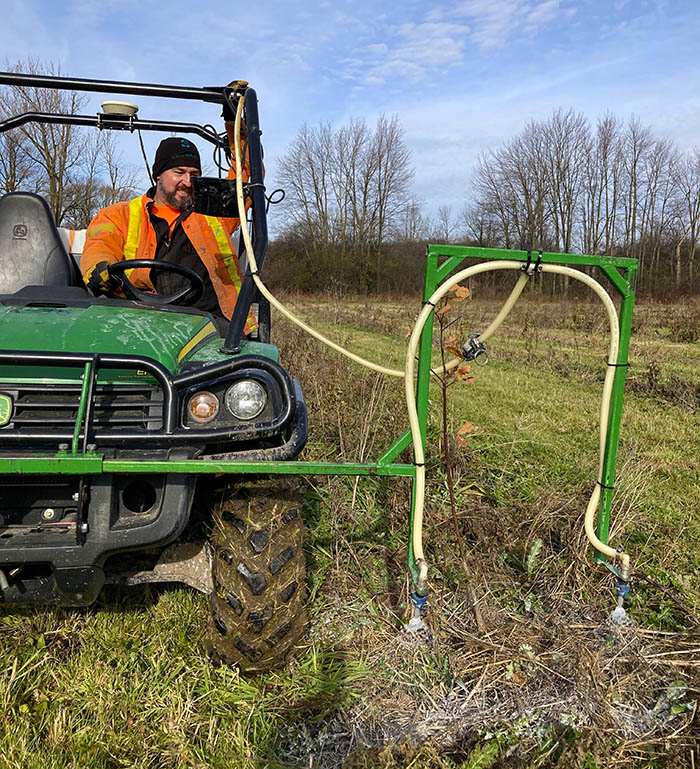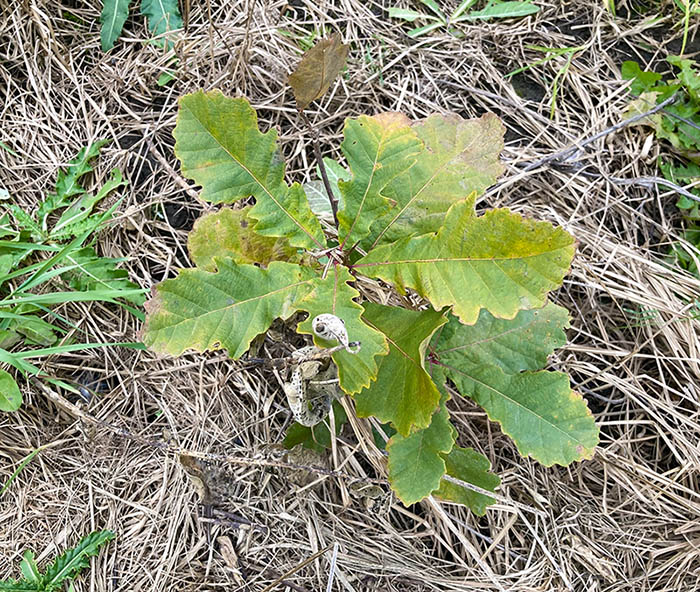Climate Change challenges UTRCA Reforestation Efforts (UTRCA Weekly, December 17, 2021)
While spring tree planting activities often get all the attention, summer and fall maintenance is just as important to ensure newly planted trees survive. Planting a seedling is just the start — vegetation control over the next two to three years is critical to ensure planting success. With tree and planting costs on the rise, maintenance becomes that much more important. Each year, Upper Thames River Conservation Authority (UTRCA) forestry staff work closely with landowners to ensure this happens.
If vegetation control isn’t done after planting, newly planted seedlings would not survive. Vegetation growing over top of seedlings can smother the young trees, robbing them of sunlight, moisture, and nutrients. To assist with vegetation control, the UTRCA applies herbicide at the time of planting and again in the fall of the first year. The fall application provides vegetation control into the second growing season.
The landowner’s contribution is to mow between the rows of seedlings, three to four times a year for the first few years. This makes it easier for staff to find the rows for the fall herbicide application, and reduces cover for rodents such as mice and voles, who will girdle hardwood seedlings during the winter.

John Enright, UTRCA Forester, has seen the impact of climate change on reforestation efforts. “Our window of opportunity for applying herbicide in the fall has been shrinking over the past years. For the fall application of herbicide to be effective, we need to ensure the seedlings are dormant and the temperatures warm enough for the herbicide to work. The issue is our falls are now warmer, preventing the seedlings from entering dormancy in a timely manner. By the time they do, we are into winter conditions. Thirty years ago we would have completed all of our fall herbicide work by November 4, at the very latest. This year, species such as bur oak, white oak, swamp white oak, and tamarack remained green and active until the third week of November, a good month longer than they would have 30 years ago.”
In 2021, the last available day to apply herbicide was November 24 and, even then, staff still did not get to all of the sites. The UTRCA will be watching closely next spring to see how effective the herbicide was when applied this late into the growing season.
